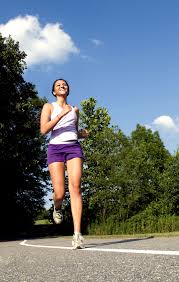When I first moved to Canada, my family decided to settle in Calgary. After a couple of weeks, I constantly felt tired and out of breath. I went to a doctor and she said this was symptoms of hypoxia, a high-altitude sickness; the recovery time should be fast since Calgary don’t have an extreme altitude. After a few weeks, the symptoms of hypoxia were gone, but it took a lot longer until I could feel comfortable to join any strenuous exercise.
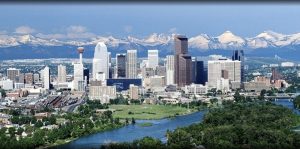
City of Calgary
A question arose from my experience, why it took me that long to adapt to the high altitude while the symptoms of hypoxia were gone within a few weeks.
The simplest answer is considering this scenario the same as if you catch the flu. The sense of illness could be gone within days; however, full recovery might take up to weeks.
A detailed explanation of high-altitude adaptation involves separating it into third processes and also taken into the consideration of how much above sea level are we talking about.
When we divide the adaptation process into three sections (figure 1), the first part happens right after entering a high-altitude environment. During this period, an individual will experience symptoms of hypoxia and there will be a significant decrease in fitness level. This is a result of low blood oxygen level, which is caused by decreasing air pressure at higher altitude. Since there is less oxygen in the blood, breath rate and heart rate will increase dramatically even during the resting time in order to maintain body basic functions, this will cause overstress on cardiac muscles.
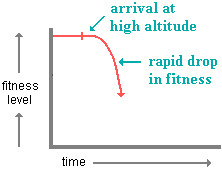
figure 1: The initial response to high altitude exposure. Image retrieve from https://www2.palomar.edu/anthro/adapt/adapt_3.htm
In the second part (figure 2), an acclimatization process would happen, which means the body will make adjustments to stop the decrease in fitness level. To lower the increased cardiac output, our body would produce more red blood cell in capillaries to carry more oxygen, so that the cardiac muscles were less stressed. Failing of acclimatization with low blood oxygen level would cause tissue hypoxia, decreased cardiac output and decreased red-blood-cell concentration. In this case, this individual couldn’t adapt at this altitude and the doctor would suggest moving back to a lower altitude.
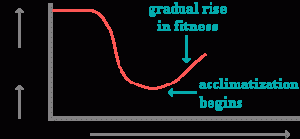
figure 2: Acclimatization process. Image retrieve from https://www2.palomar.edu/anthro/adapt/adapt_3.htm
For the third section (figure 3), the result will vary depending on the altitude. With an altitude below 10000ft, physiological adjustment takes time and eventual fitness level will return back to normal. With even higher altitude (above 12000ft), successful acclimatization rarely happens; even if an individual is able to live on the plateau, strenuous exercise and memorization task still remain difficult.
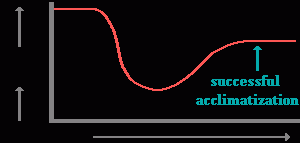
figure 3: Successful acclimatization. image retrieve from https://www2.palomar.edu/anthro/adapt/adapt_3.htm
The failure to adapt to extremely high altitude is not caused by physiological limitation. A study shown for those populations that living on extreme high altitude, shared sections of unique genetic sequence that reduce hypoxia. One of these genes is EPAS1, which is activated by low blood oxygen level and is responsible for lowing hemoglobin concentration in blood for sufficient delivery of oxygen around the body.
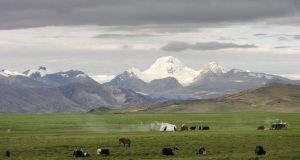
The Tibetan Plateau
In addition, physiological adaptation at high altitude increase cardiovascular strength and this characteristic is used to advantage by some endurance athletes. (figure 4) Altitude training is a several weeks training at intermediate altitude (preferably over 8,000 ft). At intermediate altitude, there is still approximately 20% oxygen, but the partial pressure of oxygen is reduced. The reduction in oxygen partial pressure forces athletes’ body to acclimate to the lack of oxygen, thus producing more hemoglobin and altering muscle metabolism. The increase in hemoglobin concentration and muscle metabolism will give athletes a competitive advantage that lasts up to 10 ~14 days.
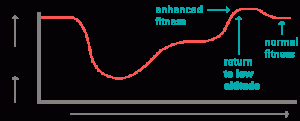
figure 4: Increase in fitness after acclimatization. Image retrieve from https://www2.palomar.edu/anthro/adapt/adapt_3.htm
In conclusion, our body is able to make some physiological adaption to the environment until it reaches some limitation. When traveling to higher altitude area, it is important to check your health condition in order to avoid unnecessary damage to your body. Also, a short-term introduction of intermediate altitude is a common training method for the athlete to increase their body condition and gain competitive advantages.
Information attribute from:
Altitude training. (2018, October 14). Retrieved October 21, 2018, from https://en.wikipedia.org/wiki/Altitude_training
Duffin, J. (2014). Faculty of 1000 evaluation for Altitude adaptation in Tibetans caused by introgression of Denisovan-like DNA. F1000 – Post-publication Peer Review of the Biomedical Literature. doi:10.3410/f.718477234.793496726
O’Neil, D. (n.d.). Human Biological Adaptability: Adapting to High Altitude. Retrieved from
https://www2.palomar.edu/anthro/adapt/adapt_3.htm

